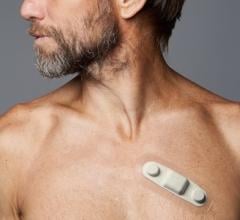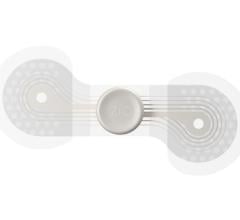
May 9, 2018 – Medicalgorithmics S.A. will present the results of a large study evaluating online versus offline electrocardiogram (ECG) monitoring methods to detect paroxysmal atrial fibrillation (PAF), examining the relationship between monitoring duration and diagnostic yield. The study showed diagnostic yield was significantly higher with the PocketECG online monitoring system than with fixed 24 and 48-hour holter and multi-day patch methods. Results will be presented at the 2018 Heart Rhythm Society (HRS) annual scientific sessions, May 9-12 in Boston.
“Paroxysmal atrial fibrillation is an arrhythmia that is often difficult to detect because of its episodic nature but presents real health risks to patients,” said Marek Dziubinski, Ph.D., lead author and inventor of the PocketECG mobile arrhythmia monitoring solution. “This large-scale study demonstrated that the ability to shorten or extend monitoring duration based on the ongoing results transmitted by online ECG monitoring technology can improve diagnostic yield over fixed offline methods.”
The study analyzed 16,595 cardiac telemetry reports developed by Medi-Lynx Cardiac Monitoring between Jan. 1 and Dec. 31, 2016. Data was collected using the PocketECG online monitoring system, which transmits full-disclosure ECG signal for up to 30 days. Continuous and fully labeled recordings, lasting between 1 and 30 days (mean duration: 18.1 ± 9.9 days), were captured with PocketECG and used to determine the monitoring duration required to detect the first AF episode for various AF burdens (AFBs). The study then evaluated the impact of monitoring duration on diagnostic yield (DY) in patients with PAF (for AFB ≤ 1 percent and AFB ≤ 10 percent), and analyzed the difference in DY between the online method (up to 30 days) and simulated offline methods (24 and 48 hours Holter and multiday patch).
For AF burden ≤ 1 percent, online monitoring with PocketECG showed:
- DY 6 times higher than the first 24h of Holter monitoring;
- DY 3.5 times higher than the first 48h of Holter monitoring;
- DY higher by 36 % than the first 11 days with the offline patch; and
- DY higher by 14 % than the first 18 days with the offline patch.
For AF burden ≤ 10 percent, the online method showed:
- DY 4 times higher than the first 24h of Holter monitoring;
- DY 2.5 times higher than the first 48h of Holter monitoring;
- DY higher by 25 % than the first 11 days with the offline patch; and
- DY higher by 10 % than the first 18 days with the offline patch.
Paroxysmal AF is a form of arrhythmia that is often difficult to diagnose because of its intermittent nature. It can lead to heart-related complications including blood clots, stroke, and heart failure. Left untreated, AF more broadly can double the risk of heart-related death and increase the risk of stroke by as much as five times.
Roughly the size of a smart-phone, the PocketECG remote arrhythmia monitoring device captures and transmits the full-disclosure ECG signal for up to 30 days – providing the onset and offset of every arrhythmia and classifying morphology for every beat. Patient symptoms are recorded on the touch screen of the device and physical activity captured to distinguish between heart rate changes caused by physical activity and those caused by arrhythmia. PocketECG detects complex ventricular and supraventricular arrhythmia including ventricular tachycardia (VT), supraventricular tachycardia (SVT), bigeminies and trigeminies, and diagnoses atrial fibrillation with single-beat accuracy. Results are statistically summarized in full-color holter-style reports delivered straight to the clinicial through a secure online portal.
Read the related content "Movement Toward Simpler, Wearable Cardiac Monitoring."
For more information: www.pocketecg.com


 September 12, 2025
September 12, 2025 









